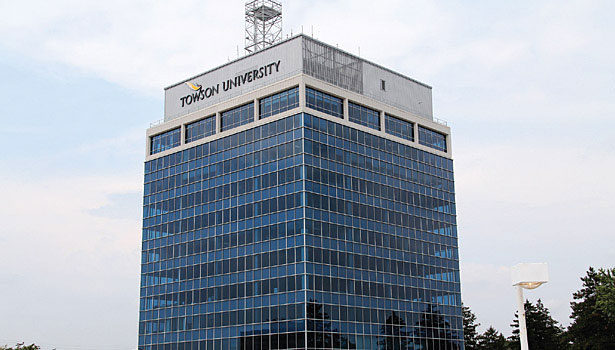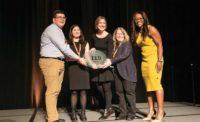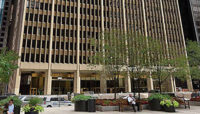In 1967, a 15-story high-rise was built in the heart of downtown Towson, MD. With 13 floors of office space and two parking garage floors, it most recently housed state and county offices. However, the building was closed in 2002 and declared a sick building.
The high-rise stood vacant for 10 years until it was acquired by Caves Valley Partners (CVP), a Towson-based real estate development firm. CVP planned an extreme makeover, reusing the existing steel and concrete structure with a state-of-the-art modernization program to bring it up to code. The makeover included a glass curtain wall façade and replacement of the mechanical and electrical systems. Today, the 170,000-sq-ft tower is fully leased and has LEED® Silver certification.
The challenge on the project was finding an HVAC system to maximize ceiling height while earning LEED points.
CVP turned to Chesapeake Contracting Group in Reisterstown, MD, and Brasher Architects in Columbia, MD. The companies decided the best fit for this challenging renovation was Mechanical Engineering & Construction Corporation (MEC2) in Baltimore.
“Towson City Center was the most challenging renovation project in my 30-year career,” said D. Ronald Brasher, president of Brasher Architects. “Nothing was as it should have been or as one would expect it to be, and nothing was square, as disclosed when the glazing contractor called as he was installing the 12-story curtain wall system and informed us that the building was out of plumb horizontally and vertically by as much as 2 in in some areas.”
Steve Wagner, MEC2s director of engineering, and Rich Beattie, principal, described gutting the tower, keeping only the structural steel, slabs, and elevator core. Wagner said one of the many challenges in selecting an HVAC system was the original design’s low deck height. Instead of a typical 14-ft space between floors, the 12 floor slabs measured only 10-ft, 6-in. This meant an HVAC solution with significant ductwork was off the table. Another factor to consider was selecting an HVAC system that would help earn LEED points.
The team ultimately selected a Mitsubishi Electric US Cooling & Heating Division VRF zoning system, which helped meet the building’s many challenges.
VRF Zoning
“Because Mitsubishi Electric’s multi-port branch circuit controller makes the system so flexible, we were able to easily orchestrate the piping and wiring for each floor,” Wagner said. “It is so much easier and less costly to install, that individual zoning becomes immediately available. When a building is not yet leased and there is no interior tenant improvement plan, this system allows you to install indoor fan coils when space becomes rented and rooms identified.”
While traditional fan coils can be 18 in deep by 14 in wide, Mitsubishi Electric’s 9-7/8-in indoor unit fan coils helped overcome the ducting height limitations. Because of their small footprint, the 27 outdoor units fit nicely on the roof, freeing up the entire 12,000-sq-ft 13th floor mechanical room. Seventy percent of the outdated system’s shaft space was filled-in, significantly increasing each floor’s square footage.
“With the complete penthouse now available, we added a water-cooled Glycol™ loop to the 13th floor in case a tenant wanted to add a data center,” Wagner said. “We also put a dedicated outdoor air system, utilizing total energy and desiccant wheels on the removed cooling tower steel grillage so that dehumidified, conditioned ventilation air was made available for distribution to down-stream fan coil units greatly reducing the energy demanded by each fan coil. We also added Mitsubishi Electric VRF zoning fan coils in the parking garage and elevator lobbies.”
LEED Silver
Mitsubishi Electric VRF zoning technology delivered 11 energy points for the certification process. LEED Silver was granted for the dedicated outdoor air unit, individual zone controls, each floor’s CO2 monitors, sound control ventilation, removal of the outdated system, truing the curtain wall, adding glazing to the windows and insulating the entire building envelope.
Efficiency upgrades for Towson City Center also resulted in a $421,999 rebate through Baltimore Gas & Electric’s Smart Energy Savers Program®, which offers incentives to buildings with sustainable improvements.
According to representatives from Mitsubishi, Towson City Center is currently one of the most efficient buildings in Towson.



